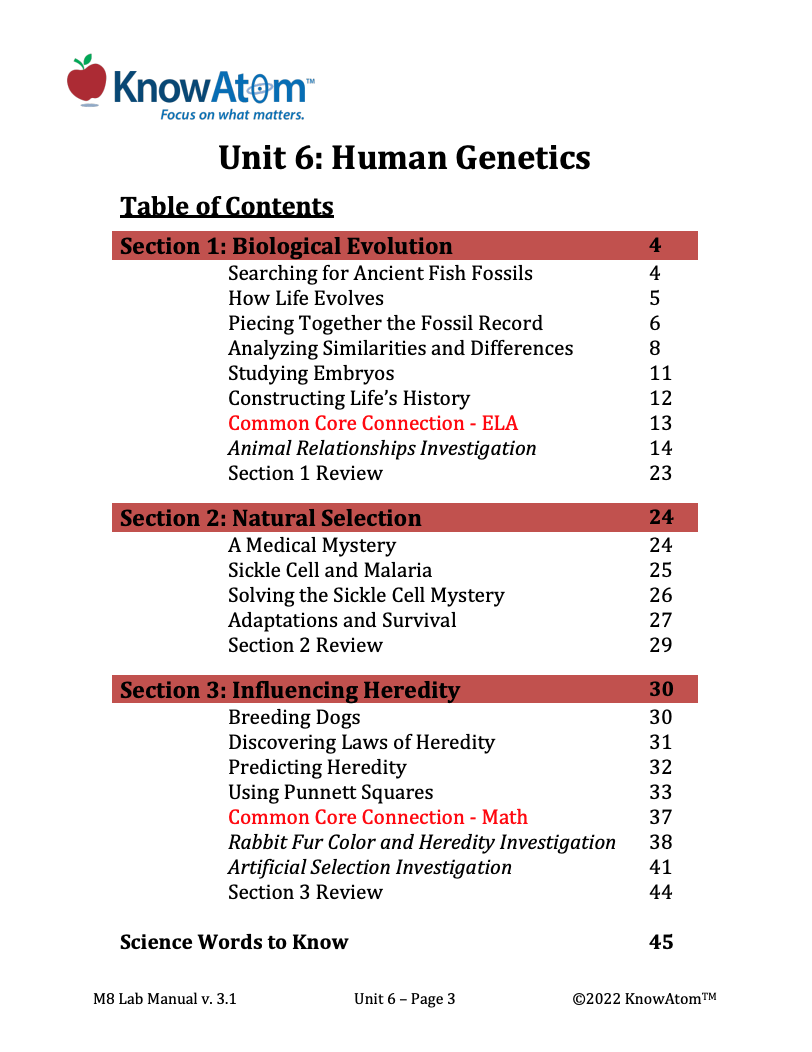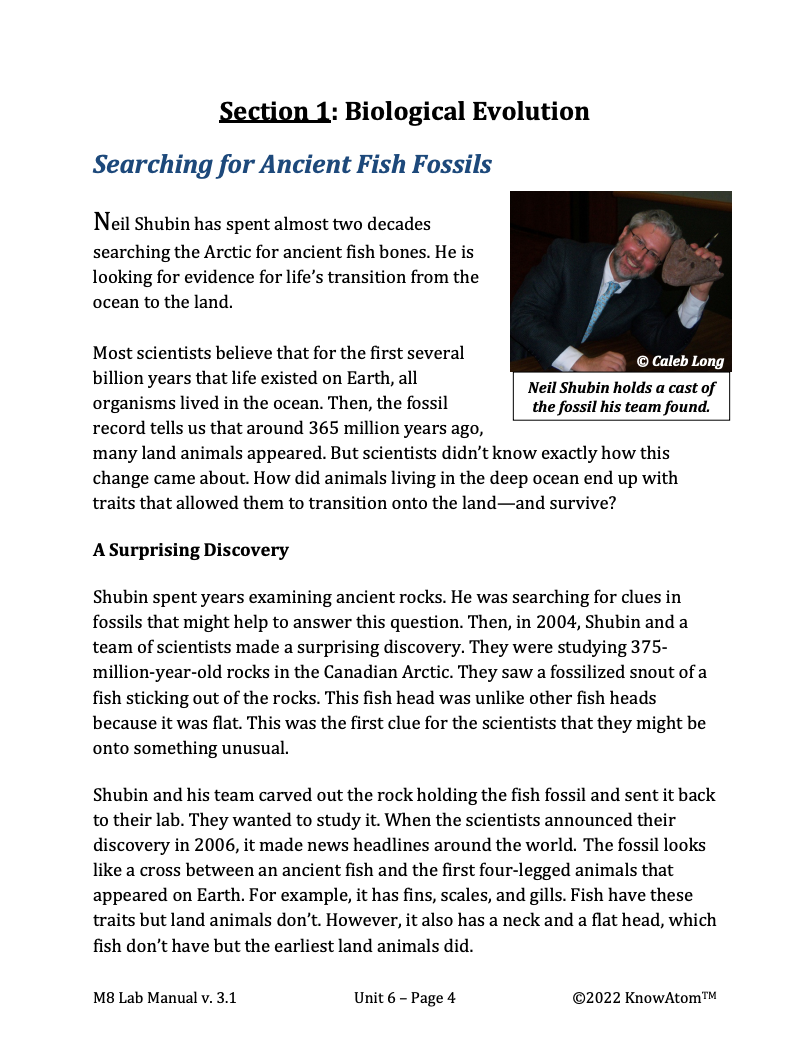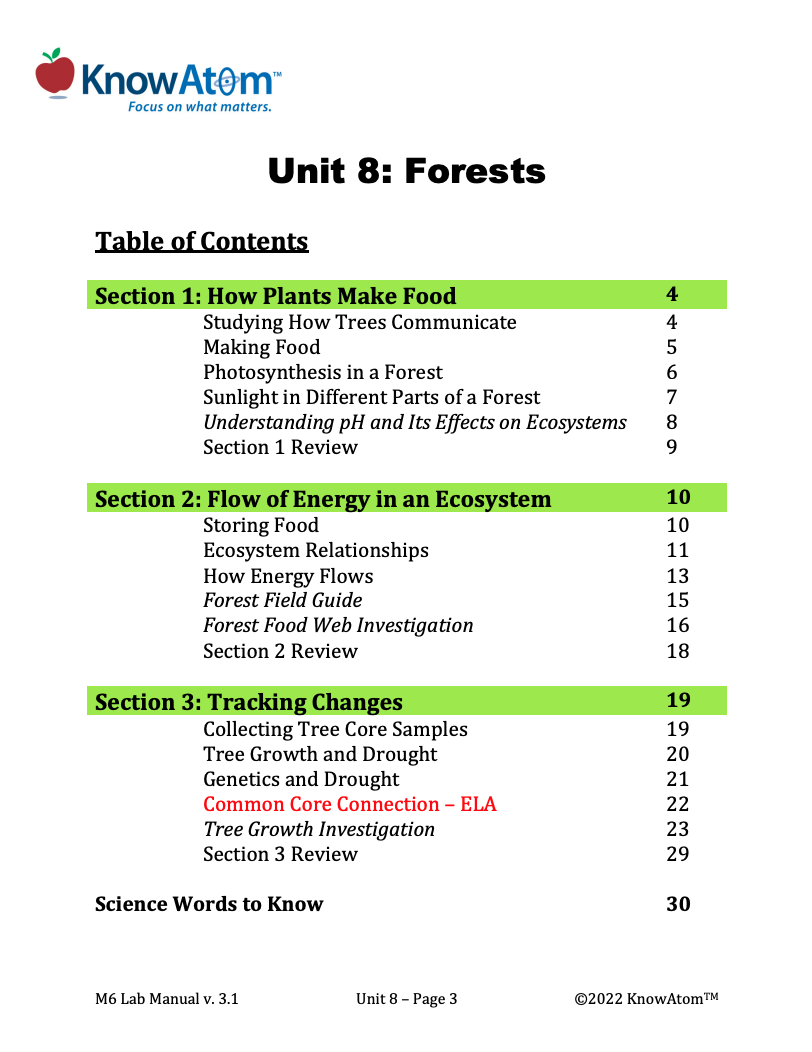
In this unit, students figure out the interconnectedness of genetics, heredity, and evolution. For this lesson, students create an experiment to observe the phenomenon of natural selection determining which organisms are most likely to survive and pass on their traits. This page showcases parts of key components of the lesson.

In this unit, students apply what they know about genes and heredity to evolution, focusing on how both genetic information and the environment influence the phenomena of how a population develops over time. In this lesson, students explore the phenomena of how adaptations help some organisms survive. Students also investigate artificial selection. This page showcases key parts of this lesson.

In this unit, students explore forest ecosystems, studying the science phenomena of interactions between living things and the environment. In this lesson, students build on their understanding of how energy affects the growth of organisms by exploring the phenomena of forest food webs, and analyzing how the phenomena of drought can have a ripple effect through the ecosystem. This page showcases all components of this lesson.
Standards citation: NGSS Lead States. 2013. Next Generation Science Standards: For States, By States. Washington, DC: The National Academies Press. Neither WestEd nor the lead states and partners that developed the Next Generation Science Standards were involved in the production of this product, and do not endorse it.
